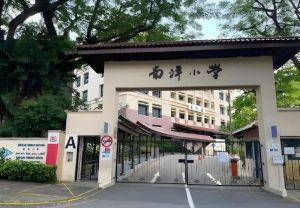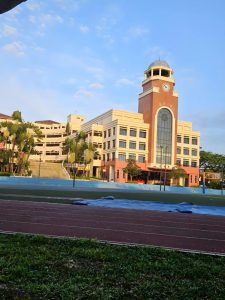How can extracurricular activities be more exciting than classroom learning? Singapore has its secret weapon: CCAs.
Have you ever wondered why Singaporean elementary and middle school students don’t head straight home to tackle homework after school? Instead, they’re fully immersed in the “nationally-backed” interest program—CCAs.
This isn’t just a few random extracurricular classes. It’s a key pillar of national character education, personally “designed, curated, and supported” by Singapore’s Ministry of Education (MOE). Whether it’s sports, arts, uniformed groups, or clubs, schools are bustling with activities, cultivating globally-minded talents without leaving the country.
Fun and substantive—what exactly is it? What are its highlights and advantages? What educational philosophy underpins it? How should parents plan for it? Keep scrolling to uncover the three key aspects of Singapore’s CCA—guaranteed to be informative, engaging, and easy to digest!

I. What is CCA? Key Advantages
Singaporean elementary students finish school at 1:30 PM. With such a long afternoon ahead, where do they go? Do they have homework? This is where CCA education comes into play:
CCA (Co-Curricular Activities) serves as a vital component of holistic education. Through CCA, students discover their interests and talents. These activities also provide a platform for developing character, learning values, honing social-emotional skills, and acquiring other relevant competencies—preparing them for future challenges.
CCA brings together students from diverse backgrounds. Through shared learning and interaction, students build friendships and strengthen their sense of belonging to the school and community.
The Ministry of Education strongly encourages primary and secondary school students to participate in CCA, while secondary students are required to join. Secondary students may pursue personal interests and engage in extracurricular activities, but these cannot replace their school-mandated co-curricular activities.
Students may choose from four CCA categories: Clubs and Societies, Sports Activities, Uniformed Groups, and Visual and Performing Arts.
With school approval, students may initiate their own activities. This allows them to explore interests or creative ideas not covered by existing CCAs and expand the school’s activity offerings.

Image Source: MOE
1. Mandatory Component of Holistic Education for Primary and Secondary Students
According to the Singapore Ministry of Education, CCAs are a vital part of students’ holistic education. They help students discover interests and talents, enhance character and social-emotional skills, and prepare them for future challenges. At the secondary level, CCAs are a “nationally mandatory” requirement: students must participate in at least one CCA and cannot substitute it with “participation in extracurricular activities.”
2. Four Categories, Endless Choices
CCAs are divided into four major categories:
Clubs and Interest Groups: Such as math, astronomy, computer science, languages, debate, chess, photography, etc., fulfilling every “I’m a jack-of-all-trades” fantasy.
Sports and Athletics: Soccer, basketball, rugby, dragon boat racing, taekwondo… developing both physical fitness and team spirit.
Uniformed Groups: From Scouts to the Student Police Force, embedding discipline, self-regulation, and public service into daily conduct.
Performing Arts Groups: Choirs, dance troupes, symphony orchestras, drama clubs, and more—awakening artistic talent and stage presence.
3. Low Barriers to Entry, High Choice Freedom + SP-CCA Innovation
Schools offer diverse CCAs, but students with niche interests can apply to create new projects—like kite-flying, sailing, or cheerleading.
Even cooler is SP-CCA (Strategic Partnership CCA), launched by MOE in collaboration with SportSG and NAC. This initiative offers specialized extracurricular activities across schools, including canoeing, water polo training, and more. Kayaking will be added in 2025.
4. Data Speaks: Extensive Choices, Not Just Academic Supplements
For instance, 2021 data shows primary schools average 5 sports-related CCAs and 11-12 non-sports options like clubs and arts; secondary schools average 6 sports and 14-15 non-sports activities. This highlights the greater diversity in non-sports offerings.
5. Tangible Advantages: Holistic Soft Skills Development + Academic Boost
CCAs not only cultivate interests but also undergo comprehensive evaluation through the LEAPS 2.0 framework (Leadership, Achievement, Participation, Service).
Achieving benchmarks across different dimensions can earn an “Excellent” rating, directly reducing O-Level exam scores by 2 points—making university admission as smooth as riding an elevator.

Source: Nanyang Primary School

II. Decoding the Visionary Approach:
Singapore’s CCA Educational Philosophy
Talent isn’t solely shaped by exam scores; here, “growth potential” beyond the classroom is central.
1. Elevated from “Extracurricular” to “Co-Curricular”
In Singapore, CCA has evolved from “extracurricular activities” to “co-curricular activities,” elevating its status to be on par with academic subjects. This elevation to the core of educational policy is a crucial component of the strategy to cultivate 21st-century competencies.
2. LEAPS 2.0: A Comprehensive Evaluation System, Fair and Forward-Looking
Introduced in 2014, LEAPS 2.0 (Leadership, Achievement, Participation, Service—no longer emphasizing Enrichment) evaluates student development across five balanced domains.
Evaluation tiers are Excellent / Good / Fair, with varying college admission bonus points: Excellent earns 2 bonus points, Good earns 1, and Fair earns none.
3. Cultivating Social Responsibility and Psychological Resilience
MOE recognizes CCA as vital for developing students’ psychological resilience and mental health. Teachers proactively identify and support students with low participation rates, rather than uniformly “removing” them.
Additionally, CCA bridges community service and volunteerism, reinforcing the “service” dimension to deepen students’ social engagement.
4. Cultural Diversity in Arts and Sports
Take traditional ethnic arts like Malay Dance as an example. Multiple schools have adjusted or added cultural dance CCA programs based on shifting student interests. MOE also collaborates with arts institutions to support cultural arts education.
This reflects Singapore’s forward-thinking approach in respecting cultural diversity while balancing artistic and traditional education.

Image Source: Nanyang Primary School

III. Parent Guide:
How to Plan Your Child’s CCA?
To make your child’s CCA a “growth accelerator,” parents can strategically assist with planning:
1. Explore Interests and Talents—Don’t Let Choices Be Merely Fun
Ask your child two questions:
① What interests you most? (Sports, arts, inventing, organizing?)
② What kind of person do you want to become? (Leader, team player, artist, tech whiz?)
These prompts from MOE’s LEAPS Parent Guide shift planning from mere “interest” to genuine exploration—not just “what Mom thinks is good.”

Source: Lianhe Zaobao
2. Goals + Self-Discipline: Plan Sustainable Participation
To reach the “Participation” level, maintain ≥75% attendance for several consecutive years while demonstrating “exemplary” behavior.
Parents should monitor attendance and set milestones (e.g., rewards after achieving 75% attendance in a year)—far more effective than blindly enrolling in “any activity.”
3. Balance Dimensions, But Don’t Overwhelm Your Child!
LEAPS 2.0 emphasizes four dimensions: Leadership, Achievement, Participation, and Service. Parents can guide children to adjust their focus: for instance, aiming for a leadership role one year, participating in community service another, while also balancing competitions or showcase events.
However, students have limited energy. Engaging in two or three highly competitive activities simultaneously may compromise academics or mental/physical health. Parents should help children allocate time wisely.
4. Communicate with the school to secure resource support
If your child shows strong interest in a specific CCA not offered by the school, encourage them to apply for a new program (subject to school approval).
Additionally, explore Special Programme CCA options like rowing or arts collaborations to broaden their choices.
5. Cultivate cultural identity through heritage arts
Families prioritizing ethnic culture may select traditional arts CCAs like Malay dance or cultural dance to foster cultural belonging through shared interests. MOE provides resources and museum partnerships for such programs.

Source: Lianhe Zaobao
Conclusion: Make CCA Your Child’s Secret Weapon for Growth!
In essence, Singapore’s CCA system transcends mere “after-school babysitting.” It constitutes a structured, policy-supported, and evaluated holistic education framework. From MOE to schools, from interest development to social responsibility, from leadership to cultural identity—CCA acts as a vital “growth vitamin.”
This not only enriches students’ lives beyond the classroom but also shapes them into well-rounded individuals—confident, team-oriented, culturally attuned, and goal-driven. Simultaneously, it enhances their academic prospects, making their interests more valuable.
Parents, why not have a chat with your child: What kind of person do you aspire to be? What enjoyable activities can you commit to? What’s the next step? Let CCA become your child’s “inner universe,” gradually shining brighter and radiating warmth!
Note: Reference materials sourced from Singapore’s MOE, NLB, Nanyang Primary School, Lianhe Zaobao, and compiled from news reports. Reproduction requires attribution; contact for removal if infringing…..
